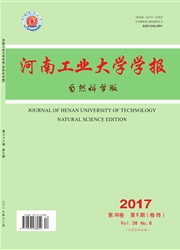

 中文摘要:
中文摘要:
分别向小麦面团中添加固态和液态木聚糖酶,采用核磁共振(NMR)和核磁共振成像(MRI)技术测定木聚糖酶对面团样品及其发酵面团样品水分存在状态的变化,以及对其发酵特性的影响.结果表明:木聚糖酶对非发酵面团样品及发酵面团样品弛豫时间T21、T22影响不大,对T23有微小的影响,但是对T22和T23相对应的质子信号A2和A3有较大的影响.相对于未添加木聚糖酶的面团,添加木聚糖酶的面团质子信号A2减小,A3显著增加,即水分从木聚糖向面筋迁移,水分流动性增加,成为结合力弱的自由水,促进面团发酵.MRI试验也进一步证明了木聚糖酶能提高面团发酵速率,节省发酵时间.
 英文摘要:
英文摘要:
Solid and liquid xylanase were added into wheat dough respectively; and the influences of xylanase on moisture state as well as fermentation properties of a dough sample and a fermented dough sample were studied by NMR and MRI techniques. The results showed that xylanase had little influences on relaxation time Tzl and T22 of both non-fermented and fermented dough samples, had small influences on T2a, but had large influences on proton signals A2 and A3 corresponding to T~ and T~. In comparison with the dough sample free of xylanase, the dough sample with xylanase was reduced in proton signal A2, and was remarkably increased in A3. That is to say, moisture was transferred from xylan to gluten; the moisture mobility was improved; and the moisture became flee water with weak bonding force so as to promote fermentation of dough. MRI tests further proved that xylanase could improve dough fermentation rate and reduce fermentation time.
 同期刊论文项目
同期刊论文项目
 同项目期刊论文
同项目期刊论文
 期刊信息
期刊信息
